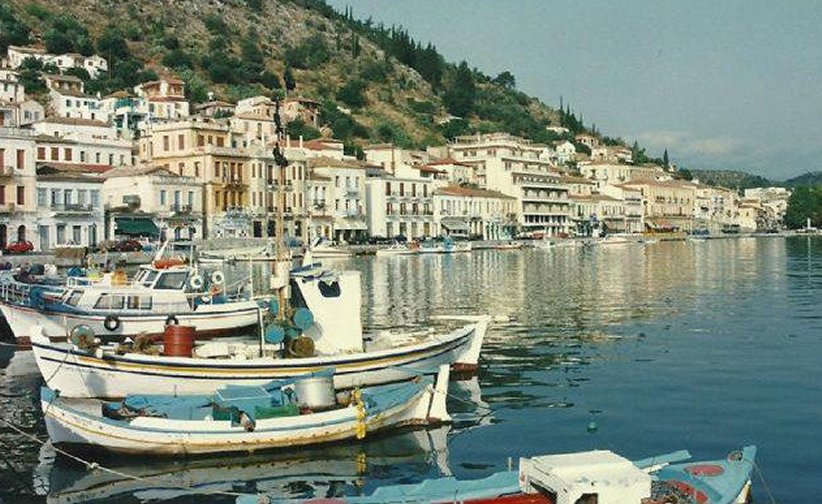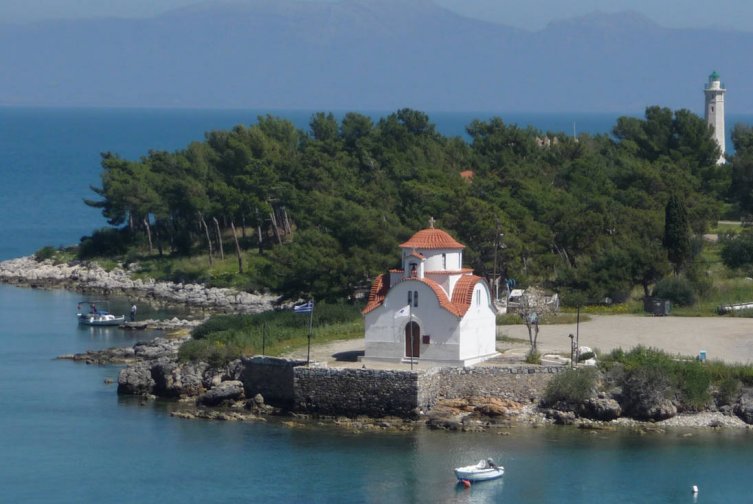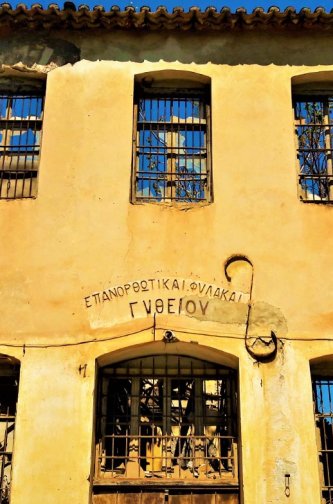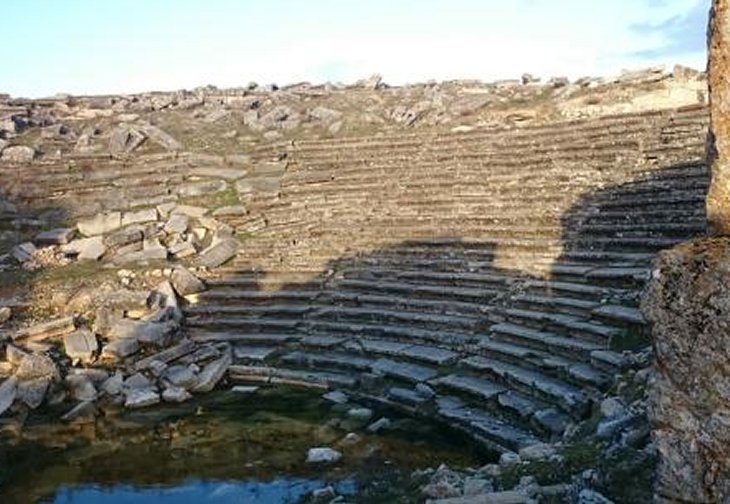Gytheio . . .
Gytheio (Greek: Γύθειο, or Gythio, also the ancient Gythium or Gytheion (Ancient Greek: Γύθειον), is a town on the eastern shore of the Mani Peninsula, and a former municipality in Laconia, Peloponnese, Greece. Since the 2011 local government reform it is part of the municipality East Mani, of which it is a municipal unit.[2] The municipal unit has an area of 197.313 km2. It was the seaport of Sparta, some 40 kilometres (25 miles) north. Gytheio is the site of ancient Cranae, a tiny island where according to legend Paris of Troy and Helen from Sparta spent their first night together before departing for Troy, thus igniting the Trojan War.Gytheio used to be an important port until it was destroyed in 4th century AD, possibly by an earthquake. Even thereafter its strategic location gave Gytheio a significant role in Maniot history. Today it is the largest and most important town in Mani. It is also the seat of the municipality of East Mani.
History
The reputed founders of ancient Gythium were Heracles and Apollo, who frequently appear on its coins or in other legends, and Castor and Pollux: the former of these names may point to the influence of Phoenician traders from Tyre, who, we know, visited the Laconian shores at a very early period. It is thought that Gytheio may have been the center of their purple dye trade because the Laconian Gulf had a plentiful source of murex. In classical times it was a community of Perioeci, politically dependent on Sparta, though doubtless with a municipal life of its own.
In 455 BC, during the First Peloponnesian War, it was burned by the Athenian admiral Tolmides who besieged the city with 50 ships and 4,000 hoplites. It was rebuilt and was most probably, the building ground for the Spartan fleet in the Peloponnesian War. In 407 BC during the Peloponnesian War, Alcibiades landed there and saw the thirty triremes the Spartans were building there. In 370 BC, the Thebans under the command of Epaminondas besieged the city successfully for three days after ravaging Laconia. However it was recaptured by the Spartans three days later.
In 219 BC, Philip V of Macedon tried to capture the city but without success. Under Nabis, Gythium became a major naval arsenal and port. During the Roman-Spartan War, Gythium was captured after a lengthy siege. After the war finished, Gythium was made part of the Union of Free Laconians under Achean protection. Nabis recaptured Gythium three years and the Spartan fleet defeated the Achean fleet outside of Gythium. Gythium was liberated by a Roman fleet under the command of Aulus Atilius Serranus.
Subsequently, Gythium formed the most important of the Union of Free Laconians, a group of twenty-four, later eighteen, communities leagued together to maintain their autonomy against Sparta and declared free by Caesar Augustus.[12] The highest officer of the confederacy was the general, who was assisted by a treasurer (rauias), while the chief magistrates of the several communities bore the title of ephors.
In Roman times Gythium remained a major port and it prospered as a member of the Union.[Roman Gythium] As purple dye was popular in Rome, Gythium exported that as well as porphyry and rose antique marble. Evidence of the ancient Gythium prosperity can be found by the fact that the Romans built an ancient theatre which is well preserved today and is still used occasionally. The ancient theatre, as well as the city's Acropolis (west to the location of the theatre) discovered by the archeologist Dimitris Skias in 1891. Some time in the 4th century AD, Gythium was destroyed. What happened to Gythium is not recorded but it is thought to have been either sacked by Alaric and Visigoths, pillaged by the Slavs or destroyed by the massive earthquake that struck the area in 375 AD.
After the earthquake Gythium was abandoned. It remained a small village throughout the Byzantine and Ottoman times. Its importance grew when Tzannetos Grigorakis built his tower at Cranae and more people came and settled at Gytheio. But during the Greek War of Independence, refugees flooded into Mani and made Gytheio a major town.
The modern Gytheio opened a port in the 1960s. Ferries sail from Gytheio to Kythira almost daily and also to Crete twice a week. It is the See of the Diocese of Gytheion and Oitylo, headed by a Metropolitan bishop of the Orthodox Church of Greece. Gytheio is the largest and most important town in Mani. Most of the ruins of ancient Gythium are now submerged in the Laconian Gulf. Some walls' remains can be seen today on the sandy beach of Valtaki and in the shallow waters, where the well known Dimitrios shipwreck lies stranded. It is also the capital of the municipality of Gytheio.
 |
 |
 |
 |
Lighthouse Kranai and the small church of Saint Peter
 |
 |
City Hall, designed by Ernst Ziller The Roman Theatre of Gytheio